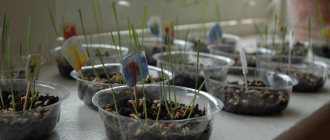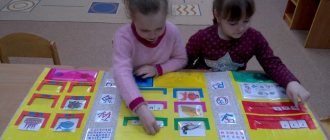Rules for constructing syncwine
- The first line of a poem is its theme. It is represented by just one word and always a noun.
- The second line consists of two words that reveal the main topic and describe it. These must be adjectives. The use of participles is allowed.
- In the third line , through the use of verbs or gerunds, actions related to the word that is the topic of the syncwine are described. The third line has three words.
- The fourth line is no longer a set of words, but a whole phrase, with the help of which the component expresses its attitude to the topic. In this case, it can be either a sentence composed by the student independently, or a catchphrase, a proverb, a saying, a quote, an aphorism, necessarily in the context of the topic being revealed.
- The fifth line is just one word, which represents a kind of summary, a summary. Most often it is simply a synonym for the theme of the poem.
When writing a syncwine in didactic practice, minor deviations from the basic rules for writing it are allowed. So, for example, the number of words in one or several lines and the replacement of given parts of speech with others can be varied.
As an example, here is a poem composed by children about this teaching method itself:
Cinquain Imaginative, precise Summarizes, develops, teaches “The power of speech lies in the ability to express a lot in a few words” Creativity.
What is syncwine?
This form of versification appeared at the instigation of the American Adelaide Crapsey at the beginning of the last century, thanks to the eastern principles of poetry - haiku and tanka. The result was a cinquain - a laconic five-line poetic form that carries synthesized information. Sinkwine is divided into several varieties, each of which has certain composition rules.
Crapsey came up with the traditional form of composing a pentaline, where the work included 22 syllables and had a structure like this: 2 - 4 - 6 - 8 - 2, where the number indicates the number of syllables in each line.
The didactic form of syncwine began to be used to teach American schoolchildren. It differs from other five-line verses in that it is not the observance of the syllable structure that is important, but the semantic information of the lines.
The classic traditional syncwine is composed as follows:
- The first line is the topic, noun or pronoun;
- The second line is two adjectives or participles, they briefly characterize the topic, describing it;
- The third line is three words of verbs or gerunds that reveal the action;
- The fourth line is the author’s opinion about the topic being described in four words;
- The fifth line is the final line, the essence of the topic, consisting of one word and any part of speech.
Of course, these are the general basics of writing a syncwine that you should try to adhere to. But small adjustments can be made if the meaning of the poem benefits from this. To prevent a five-line text from turning out to be a jumbled collection of words, it is allowed to increase the words in a line or replace parts of speech, and so on. The main thing is that as a result the author creates an interesting creation with important information.
How to use syncwines in the classroom?
The topic chosen for compiling a syncwine should be close and interesting to students. Better results can be achieved if there is room for emotionality and sensuality.
Children do not always immediately get involved in work. Difficulties may be associated with the need for analysis, comprehension of the topic, insufficient vocabulary, misunderstanding of certain terms, and fear of making mistakes. To help the children, there is a need to ask leading questions, broaden their horizons, encourage any aspiration of the students, and answer the questions they have.
The main task of a teacher who uses the syncwine method in the classroom is the need to think through a clear system of logically interconnected elements, the embodiment of which in images will allow students to comprehend and remember the material of the subject.
How to teach children to write syncwine?
First of all, it is necessary to tell that syncwine is the desire to fit one’s knowledge, thoughts, feelings, emotions, associations into a short form, this is an opportunity to express one’s opinion regarding any issue, subject, event, phenomenon, which will be the main theme of the work . Then you need to explain the basic rules for writing a quintet, and give several examples for clarity. And only after this the teacher announces the topic, stipulating the time allotted for this work.
After completing the creative process, children, if desired, read out their poems. If the work was done, for example, as homework, the teacher can read out (or ask the author of the work to do so) the most interesting options. As an example, you can try to compose one general syncwine by writing it on the board. Work in pairs or groups is allowed. But individual work is considered the most effective, as it allows the teacher to understand the depth of understanding of the material by each student.
Rules for writing syncwine
It is necessary that the syncwine contains important information, and not just a bunch of words.
Rules for writing syncwine:
- volume – 5 lines;
- The text is built on the principle of an irregular rhombus or herringbone.
Deviation from these rules is possible if the content requires it. According to this principle, the theme is embodied in the syncwine line by line:
- first - 1 word that expresses the main topic;
- second – 2 words describing properties;
- third – 3 words indicating actions;
- fourth – a phrase of 4 words, which gives an assessment of the author’s attitude to the topic;
- the fifth line is a noun-association for the concept or subject under consideration.
How to work with the syncwine theme. first and second line
For example, a non-rhyming poem for the word book. This word is the topic and is written in the first line. Books are different; moving on to the second line, you should think about how to characterize it. For example, interesting, instructive.
How to come up with the third line of syncwine?
In this line you need to think about what actions are performed with the book. It is printed, written, located on the shelf. But in this case, it would be correct to determine what influence it has on the one who composes the syncwine. For example, it captivates, teaches, narrates. It is important to stick to the created image. If, for example, the second line says “interesting,” then you shouldn’t write something that makes you bored. In addition, cognate words should be avoided. In this case, you shouldn’t write “interested” either.
We formulate the fourth line - attitude to the topic
This line describes the author's attitude towards a given topic. You need to decide on the attitude, what significance the book has in the life of the author of a five-line poem or what attitude it evokes. For example, “We have a lot of books at home” or “I read all night long.”
How to sum it up: the fifth line of syncwine
To summarize, you need to formulate the main idea. For example, if we talk about summer as the best time of the year, when they swim, relax, and walk. In the last phrase the word “vacation” would be appropriate. In the case of a book, the final word may be “knowledge.”
Areas of use
Sinkwine as a teaching method is universal. It can be applied to topics in any subject in the school curriculum. It allows students to become interested, helps them better understand and comprehend the material being studied. Composing a quintet is quite simple, so it can be used when working with children of any age.
Cinquain is a special poem that is the result of analysis and synthesis of existing or newly obtained data. It can be used at the challenge stage, when children, even before becoming familiar with a new topic, compose a poem based on the information that they currently know. This allows the teacher to understand what the children already know on this issue and will provide an opportunity to correct the information that needs to be conveyed to the children in order for them to correctly assimilate the material.
At the comprehension stage, writing a syncwine allows the teacher to evaluate how students understand the topic being studied, diversifies the learning process, and makes it more interesting, because a syncwine is also a game activity. In this case, the technique is a change of activity that contributes to some emotional relief for schoolchildren.
It can also be used at the reflection stage. A thought translated into an image allows the teacher to assess the level of understanding of the studied material by students. Sinkwine is considered a fast but very powerful reflection tool.
Compiling a syncwine is a creative activity and is more often used in the study of humanitarian subjects - literature, history. But in order to diversify the learning process and make it more interesting, you can use this technique in lessons, physics, for example. After familiarizing themselves with the topic “Light”, the teacher invites the children to compose a syncwine.
Light
Answer using adjectives, what is he like? Bright, warm
Tell us, using verbs, what it does? It burns, illuminates, flickers.
Make up a sentence or phrase that expresses your attitude to the topic and is a kind of conclusion. People need it.
Summarize it in one word. Shine.
In natural history, you can invite children to write poems about the seasons.
Summer Hot, cheerful Walk, play, relax. Look forward to. Holidays!
Spring Warm, bright Blooms, turns green, makes you happy. Nature is waking up. Great!
Benefits in teaching practice
For didactic purposes, syncwine has been successfully used in American schools for quite some time, and for some time now (since about 1997) in Russia. This method is a gaming activity that allows you to diversify the learning process, better understand the topic being studied through the game, and make it more interesting.
Since a five-line poem is the result of analysis and synthesis of existing and recently obtained new data, this technique is used for the final verification of the topic being studied. The method can also be used at the initial stage, before introducing a new topic, to determine what children already know on this issue, because they will compose a syncwine based on the information they have. During the lesson, this information is supplemented and corrected, after which, when composing a new five-line, you can compare it with the first and understand what new things the children have learned.
First of all, you should explain to the child that syncwine is an opportunity to put your own thoughts, feelings, knowledge, emotions and associations into a short form, to express your opinion on any topic and on any issue. First, you can practice with your children writing five-line poems about the simplest and most familiar subjects, gradually moving on to more complex ones. Thanks to its beauty and expressiveness, cinquain - for example, on the theme of “mother”, “family” or some holiday - can even turn into a congratulation or signature for a postcard.
Thus, we can highlight the advantages of the method:
- ease of construction - suitable for use by primary school students;
- improving the ability to express one’s thoughts succinctly, concisely and beautifully;
- development of analytical and creative abilities, creative thinking;
- increasing vocabulary;
- increasing interest in the material;
- variability.
Options for working with syncwine
In addition to the traditional compilation of syncwine, other types of work with pentaverses in the lesson are also possible.
Compose a story based on a completed poem. It is advisable, when composing it, to use the words and phrases used in the given syncwine.
Edit the finished syncwine in order to improve it.
Add syncwine. To do this, you need to analyze the given poem, identify the missing part and fill it in. For example, you might suggest a poem that doesn't have a theme. Using words that characterize and reveal it, students should understand what is being said:
Fleeting, freezing Runs, stops, heals The amazing phenomenon of Life.
Children must determine that the theme of this syncwine is “Time.”
What is syncwine? Traditional and didactic forms
Many people are interested in what syncwine is and how to implement this method in teaching. A cinquain is a five-line, unrhymed poem that briefly but succinctly states the meaning of a problem or concept.
A traditional five-line poem would have 22 syllables, which follow a 2-4-6-8-2 structure. This means that the first line has 2 syllables, the second - 4, etc. In didactic syncwine, the main thing is not the number of syllables, but the semantic load of each line. This form of education was first used in an American school. This is a creative work, at the end of which a poem is obtained, but without rhyme. For example:
- Sinkwine.
- Imaginative, precise.
- Generalizes, develops, teaches.
- The power of speech lies in the ability to express a lot in a few words.
- Creation.
With the help of a five-line poem, students learn to quickly and effectively analyze, synthesize and generalize knowledge.
Advantages of the method
When compiling a syncwine in class:
- interest in the material being studied increases;
- imaginative thinking develops;
- students’ creative abilities develop;
- communication skills and the ability to express one’s thoughts succinctly and concisely are improved;
- thinking and imagination develops;
- the ability to analyze is developed;
- the time allocated for memorizing information is reduced;
- vocabulary expands.
Compiling a syncwine in class takes relatively little time, but at the same time it is an effective way to develop figurative speech, which helps to quickly obtain results.
In the course of working using this method, students are able not only to deepen their knowledge on any topic, but also to improve their ability to work independently with additional sources of information and plan their educational activities.
How to make a syncwine: my tips
In order to learn how to correctly compose a syncwine, you need to develop thinking and imagination. The more training you have on composing syncwines, the faster and better quality they will be.
First line
In order to make the first line of a syncwine, you need to try to isolate the most important idea from the topic. For example, when working with syncwine on literature, the word “Bulgakov” may be written in the first line.
Second line
For the second line of the syncwine, according to the algorithm, you need to select two adjectives that would clarify the noun in the first line. For example, it could be “Talented. Interesting."




